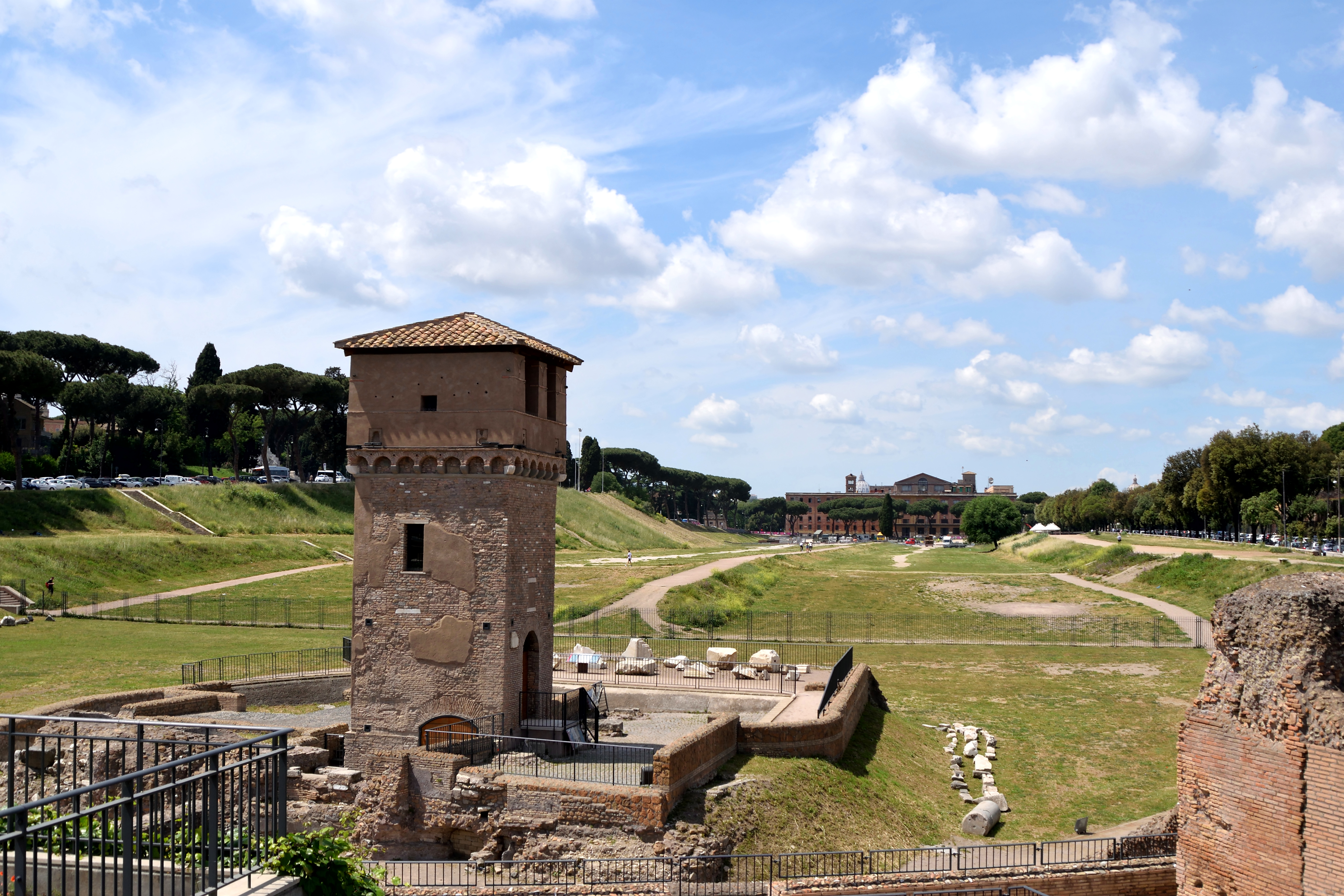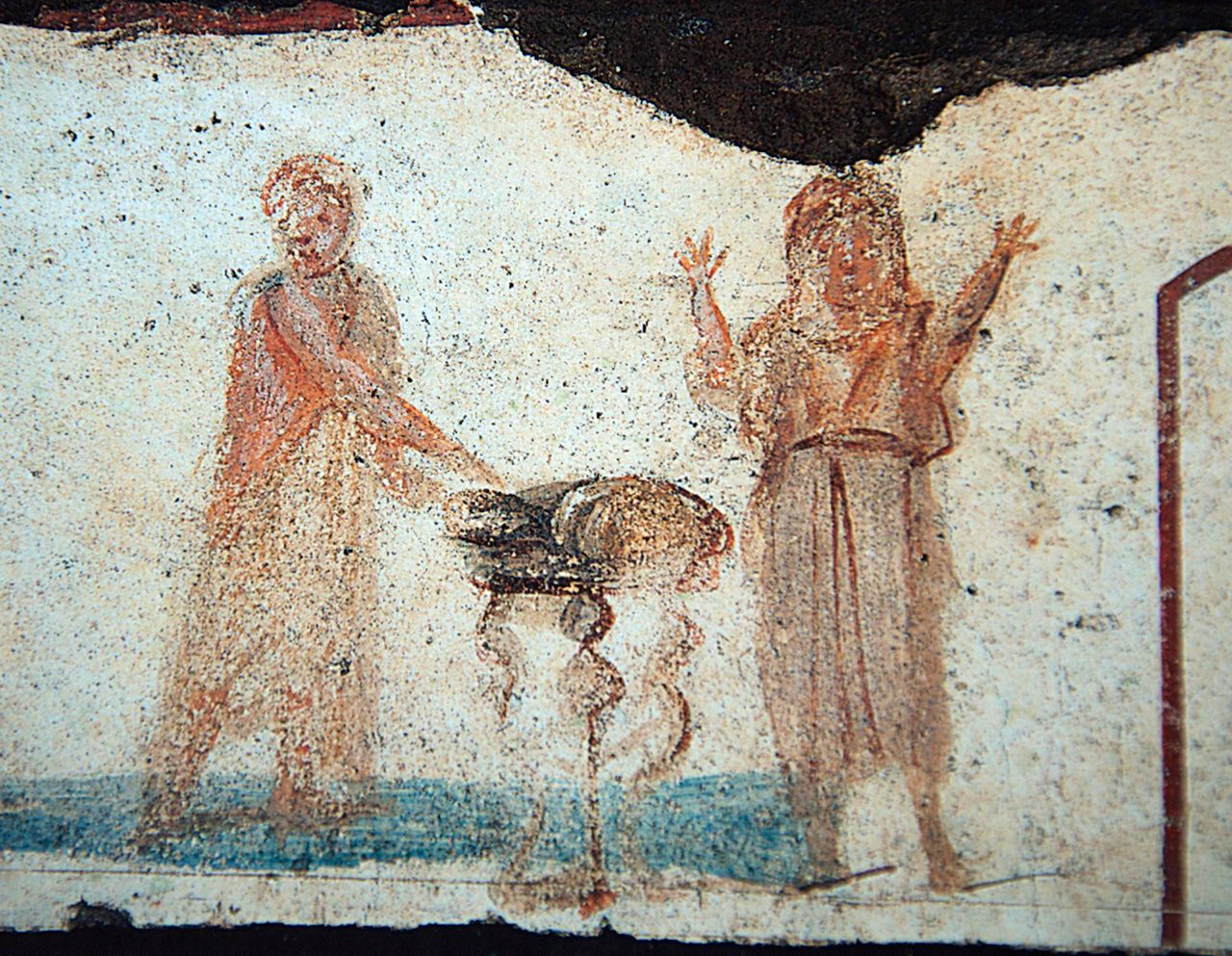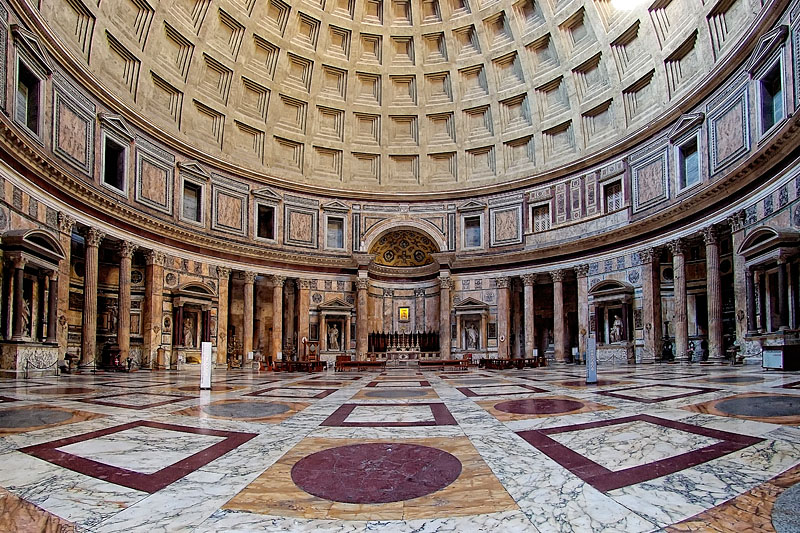|
Culture In Rome
The culture of Rome in Italy refers to the arts, high culture, language, religion, politics, libraries, cuisine, architecture and fashion in Rome, Italy. Rome was supposedly founded in 753 BC and ever since has been the capital of the Roman Empire, one of the main centres of Christianity, the home of the Roman Catholic Church and the seat of the Italian Republic. Due to its historical and social importance, Rome has been nicknamed the ''Caput Mundi'', or "capital of the world". The arts Architecture and city layout Ancient Rome One of the symbols of Rome is the Colosseum (70-80 AD), the largest amphitheatre ever built in the Roman Empire. Originally capable of seating 60,000 spectators, it was used for gladiatorial combat. The list of the very important monuments of ancient Rome includes the Roman Forum, the Domus Aurea, the Pantheon, Trajan's Column, Trajan's Market, Ostia Antica, the several catacombs area, the Circus Maximus, the Baths of Caracalla, Castel Sant'A ... [...More Info...] [...Related Items...] OR: [Wikipedia] [Google] [Baidu] |
Properties Of The Holy See
The properties of the Holy See are regulated by the 1929 Lateran Treaty signed with the Kingdom of Italy (1861–1946), Kingdom of Italy. Although part of Italy, Italian territory, some of them enjoy extraterritoriality similar to those of foreign embassies, including tax exemptions.see Article 13, 14, 15 and 16 in thLateran Treaty Nonetheless, those visiting these properties are generally required to follow the immigration rules of Italy. For example, American seminarians at the Pontifical North American College need an Italian visa, despite residing, and studying, in extraterritorial property of the Holy See. Outside Vatican City but inside Rome Extraterritorial property * Archbasilica of Saint John Lateran (''Arcibasilica di San Giovanni in Laterano'') * Basilica di Santa Maria Maggiore, Basilica of Saint Mary Major (''Basilica di Santa Maria Maggiore'') * Basilica of Saint Paul Outside the Walls (''Basilica di San Paolo fuori le Mura'') (the complex includes also the Bene ... [...More Info...] [...Related Items...] OR: [Wikipedia] [Google] [Baidu] |
Colosseum
The Colosseum ( ; , ultimately from Ancient Greek word "kolossos" meaning a large statue or giant) is an Ellipse, elliptical amphitheatre in the centre of the city of Rome, Italy, just east of the Roman Forum. It is the largest ancient amphitheatre ever built, and is still the largest standing amphitheatre in the world, despite its age. Construction began under the Emperor Vespasian () in 72 and was completed in AD 80 under his successor and heir, Titus (). Further modifications were made during the reign of Domitian (). The three emperors who were patrons of the work are known as the Flavian dynasty, and the amphitheatre was named the Flavian Amphitheatre (; ) by later classicists and archaeologists for its association with their family name (Flavia (gens), Flavius). The Colosseum is built of travertine#Uses, travertine limestone, tuff (volcanic rock), and brick-faced Roman concrete, concrete. It could hold an estimated 50,000 to 80,000 spectators at various points in its h ... [...More Info...] [...Related Items...] OR: [Wikipedia] [Google] [Baidu] |
Castel Sant'Angelo
Castel Sant'Angelo ( ), also known as Mausoleum of Hadrian (), is a towering rotunda (cylindrical building) in Parco Adriano, Rome, Italy. It was initially commissioned by the Roman Emperor Hadrian as a mausoleum for himself and his family. The popes later used the building as a fortress and castle, and it is now a museum. The structure was once the tallest building in Rome. Hadrian's tomb The tomb of the Roman emperor Hadrian, also called Hadrian's mole, was erected on the right bank (or northern edge) of the Tiber, between 134 and 139 AD. Originally the mausoleum was a decorated cylinder, with a garden top and golden quadriga. Hadrian's ashes were placed here a year after his death in Baiae in 138, together with those of his wife Sabina, and his first adopted son, Lucius Aelius, who died in 138. Following this, the remains of succeeding emperors were also put here, the last recorded deposition being Caracalla in 217. The urns containing these ashes were probably placed i ... [...More Info...] [...Related Items...] OR: [Wikipedia] [Google] [Baidu] |
Baths Of Caracalla
The Baths of Caracalla () in Rome, Italy, were the city's second largest Ancient Rome, Roman public baths, or ''thermae'', after the Baths of Diocletian. The baths were likely built between AD 212 (or 211) and 216/217, during the reigns of emperors Septimius Severus and Caracalla. They were in operation until the 530s and then fell into disuse and ruin. Both during and since their operation as baths, they served as inspiration for many other notable buildings, ancient and modern, such as the Baths of Diocletian, the Basilica of Maxentius, the original Pennsylvania Station (1910–1963), Pennsylvania Station in New York City, Chicago Union Station and the Senate of Canada Building. Artworks recovered from the ruins include famous sculptures such as the ''Farnese Bull'' and the ''Farnese Hercules''. Today the Baths of Caracalla are a tourist attraction. History Construction Construction of the baths was probably initiated by emperor Septimius Severus and completed during the ... [...More Info...] [...Related Items...] OR: [Wikipedia] [Google] [Baidu] |
Circus Maximus
The Circus Maximus (Latin for "largest circus"; Italian language, Italian: ''Circo Massimo'') is an ancient Roman chariot racing, chariot-racing stadium and mass entertainment venue in Rome, Italy. In the valley between the Aventine Hill, Aventine and Palatine Hill, Palatine hills, it was the first and largest stadium in ancient Rome and its later Roman Empire, Empire. It measured in length and in width and could accommodate over 150,000 spectators. In its fully developed form, it became the model for Circus (building), circuses throughout the Roman Empire. The site is now a public park. Events and uses The Circus was Rome's largest venue for ''ludi'', public games connected to Religion in ancient Rome, Roman religious Roman festival, festivals. ''Ludi'' were sponsored by leading Romans or the Roman state for the benefit of the SPQR, Roman people (''populus Romanus'') and List of Roman deities, gods. Most were held annually or at annual intervals on the Roman calendar. Oth ... [...More Info...] [...Related Items...] OR: [Wikipedia] [Google] [Baidu] |
Catacombs Of Rome
The Catacombs of Rome () are ancient catacombs, underground burial places in and around Rome, of which there are at least forty, some rediscovered since 1578, others even as late as the 1950s. There are more than fifty catacombs in the underground of Rome in which about 150 km of tunnels run. Though most famous for Christian burials, either in separate catacombs or mixed together, Jews and also adherents of a variety of pagan Roman religions were buried in catacombs, beginning in the 2nd century AD,Toynbee: 39–40. occasioned by the ancient Roman ban on burials within a city, and also as a response to overcrowding and shortage of land. The most extensive and perhaps the best known is the Christian Catacomb of Callixtus located near the Park of the Caffarella, but there are other sites, both Christian and not, scattered around the city, some of which are now engulfed by modern urban sprawl. The Christian catacombs are extremely important for the history of Early Christian ... [...More Info...] [...Related Items...] OR: [Wikipedia] [Google] [Baidu] |
Ostia Antica
Ostia Antica () is an ancient Roman city and the port of Rome located at the mouth of the Tiber. It is near modern Ostia, southwest of Rome. Due to silting and the invasion of sand, the site now lies from the sea. The name ''Ostia'' (the plural of ''ostium'') derives from Latin ''os'' 'mouth'. Ostia is now a large archaeological site noted for the excellent preservation of its ancient buildings, magnificent frescoes and impressive mosaics. The city's decline after antiquity led to harbor deterioration, marshy conditions, and reduced population. Sand dunes covering the site aided its preservation. Its remains provide insights into a city of commercial importance. As in Pompeii, Ostia's ruins provide details about Roman urbanism that are not accessible within the city of Rome itself. History Origins Ostia may have been Rome's first '' colonia''. According to legend, Ancus Marcius, the fourth king of Rome, was the first to destroy Ficana, an ancient town that was only fro ... [...More Info...] [...Related Items...] OR: [Wikipedia] [Google] [Baidu] |
Trajan's Market
Trajan's Market (; ) is a large complex of ruins in the city of Rome, Italy, located on the Via dei Fori Imperiali, at the opposite end to the Colosseum. The surviving buildings and structures, built as an integral part of Trajan's Forum and nestled against the excavated flank of the Quirinal Hill, present a living model of life in the Roman capital and a glimpse at the restoration in the city, which reveals new treasures and insights about ancient Roman architecture. Thought to be the world's oldest shopping mall, the arcades in Trajan's Market are now believed by many to be administrative offices for Emperor Trajan. The shops and apartments were built in a multi-level structure and it is still possible to visit several of the levels. Highlights include delicate marble floors and the remains of a library. Construction Trajan's Market was probably built between 100–110 AD by Apollodorus of Damascus, an architect who always followed Trajan in his adventures and to whom ... [...More Info...] [...Related Items...] OR: [Wikipedia] [Google] [Baidu] |
Pantheon, Rome
The Pantheon (, ; ,Although the spelling ''Pantheon'' is standard in English, only ''Pantheum'' is found in classical Latin; see, for example, Pliny, ''Natural History'36.38 "Agrippas Pantheum decoravit Diogenes Atheniensis". See also ''Oxford Latin Dictionary'', s.v. "Pantheum"; ''Oxford English Dictionary'', s.v"Pantheon" "post-classical Latin ''pantheon'' a temple consecrated to all the gods (6th cent.; compare classical Latin ''pantheum'')". ) is an ancient 2nd century Roman temple and, since AD 609, a Catholic church called the Basilica of St. Mary and the Martyrs () in Rome, Italy. It is perhaps the most famous, and architecturally most influential, rotunda. The Pantheon was built on the site of an earlier temple, which had been commissioned by Marcus Vipsanius Agrippa during the reign of Augustus (27 BC – AD 14). After the original burnt down, the present building was ordered by the emperor Hadrian and probably dedicated AD 126. Its date of construction i ... [...More Info...] [...Related Items...] OR: [Wikipedia] [Google] [Baidu] |
Domus Aurea
The Domus Aurea (Latin, "Golden House") was a vast landscaped complex built by the Roman Empire, Emperor Nero largely on the Oppian Hill in the heart of ancient Rome after the Great Fire of Rome, great fire in 64 AD had destroyed a large part of the city.Roth (1993) It replaced and extended his Domus Transitoria that he had built as his first palace complex on the site. History Construction began after the great fire of 64 and was nearly completed before Nero's death in 68, a remarkably short time for such an enormous project. Nero took great interest in every detail of the project, according to Tacitus, and oversaw the engineer-architects, Celer and Severus, who were also responsible for the attempted navigable canal with which Nero hoped to link Misenum with Lake Avernus. Emperor Otho and possibly Titus allotted money to finish at least the structure on the Oppian Hill; this continued to be inhabited, notably by emperor Vitellius in 69 but only after falling ill, until it ... [...More Info...] [...Related Items...] OR: [Wikipedia] [Google] [Baidu] |
Roman Forum
A forum (Latin: ''forum'', "public place outdoors", : ''fora''; English : either ''fora'' or ''forums'') was a public square in a municipium, or any civitas, of Ancient Rome reserved primarily for the vending of goods; i.e., a marketplace, along with the buildings used for shops and the stoas used for open stalls. But such fora functioned secondarily for multiple purposes, including as social meeting places for discussion. Many fora were constructed at remote locations along a road by the magistrate responsible for the road, in which case the forum was the only settlement at the site and had its own name, such as Forum Popili or Forum Livi. Functions In addition to its standard function as a marketplace, a forum was a gathering place of great social significance, and often the scene of diverse activities, including political discussions and debates, rendezvous, meetings, et cetera. In that case, it supplemented the function of a '' conciliabulum''. Every municipality () ha ... [...More Info...] [...Related Items...] OR: [Wikipedia] [Google] [Baidu] |









